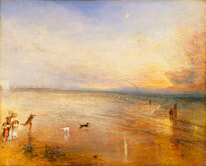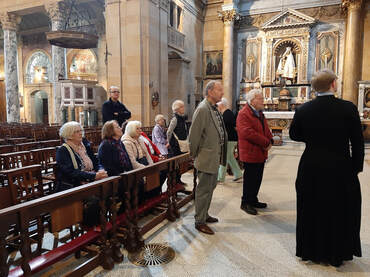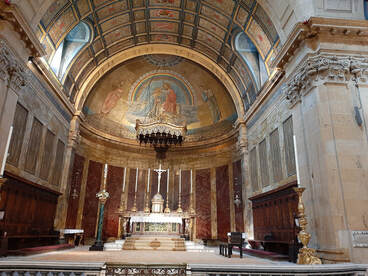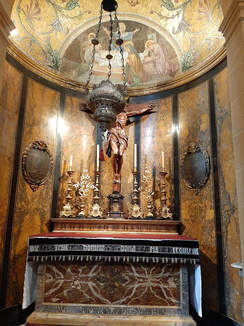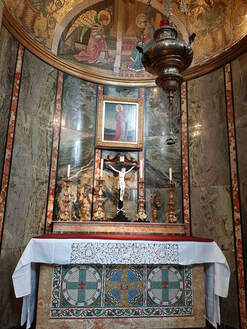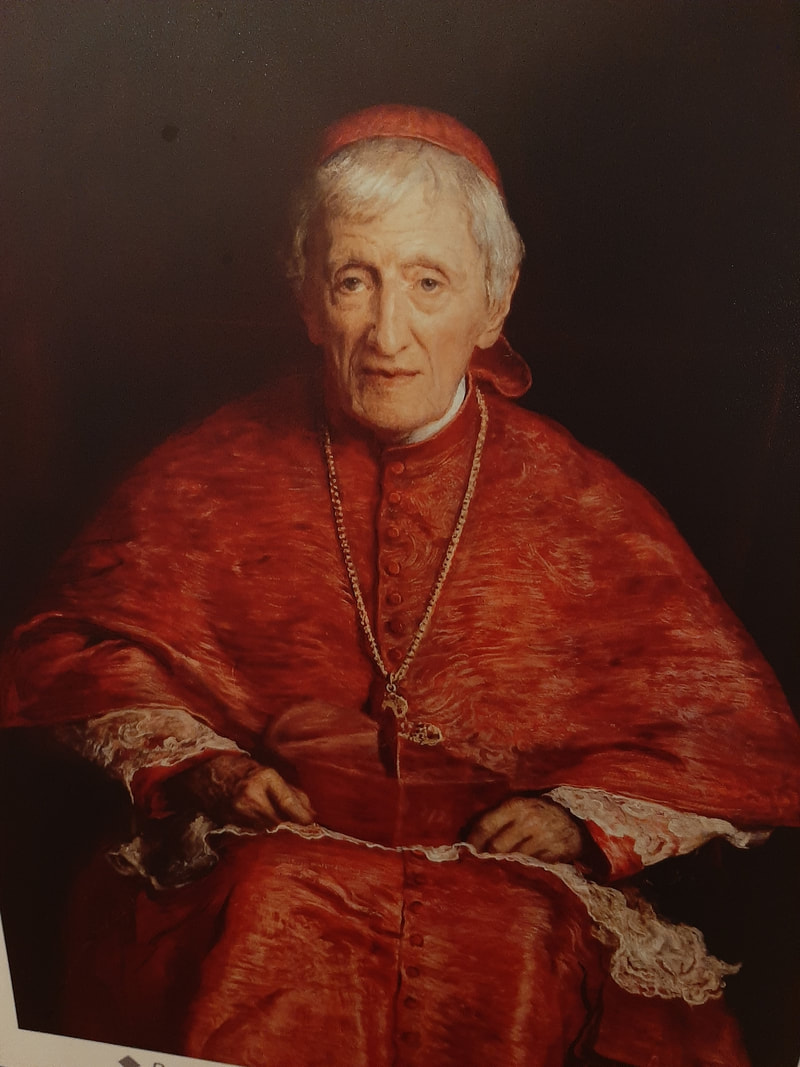South Solihull u3a Art Appreciation Group
Coordinator: Pam Latham Telephone : 01564 77 2133
When: Monthly (Normally 1st Wednesday in each month), at 14:00h
Where: Spring & Summer: Art related visits. Autumn & Winter: Jubilee Room at British Legion Hall, Warwick Rd. Knowle.
When: Monthly (Normally 1st Wednesday in each month), at 14:00h
Where: Spring & Summer: Art related visits. Autumn & Winter: Jubilee Room at British Legion Hall, Warwick Rd. Knowle.
INTRODUCTION
The Art Appreciation Group was established in January 2012. The aim of the group is to promote interest and knowledge in all aspects of art including painting, sculpture, glass, ceramics and jewellery. This is achieved by visiting a variety of art related places of interest during Spring and Summer months and talks and discussions during Autumn and Winter.
Spring and Summer events are usually held on 1st Wednesday in each month. Autumn and Winter events are held in Jubilee Room at British Legion Hall in Knowle. Events are planned well in advance and full details are sent to members by email 4 weeks before each event.
Light refreshments are usually included in our events making them both educational and social occasions.
Anyone who is interested in joining this large, friendly group should contact Pam Latham by email at [email protected] or Telephone: 01564 77 2133
PROPOSED FUTURE EVENTS
Proposed future events include a talk and discussion about life and work of Lucie Rie (doyenne of British Studio Pottery)
PAST EVENTS
2nd AUGUST 2023 - LEAMINGTON SPA ART GALLERY
Members of the group were given a very interesting tour of the Gallery by our guide Jodie. She explained that our time there would take in two very different exhibitions.
The first was situated in the building which formerly had housed the swimming pool. However traces of its previous incarnation remain visible in the brickwork, the glass roof and the spaces that still exist beneath the floors. The exhibition reimagines the room as a swimming pool, telling the story of its history and showing how swimming has been an inspiration to artists. Jodie drew our attention to many artefacts and supplied interesting anecdotes to each one.
The second exhibition was along more conventional lines for an art gallery. Curators had put together paintings from their 17th century Dutch collection. The museum had collected them between 1947 and 2015 from three British collectors. These paintings explored the artistic richness of the 17th century Netherlands and were divided up into pictorial landscapes, portraiture and religious works.
These two exhibitions were packed full of items to view and content to read. After the tour was over we continued to peruse the displays at a more leisurely pace.
5th JULY 2023 - ROYAL BIRMINGHAM SOCIETY OF ARTISTS GALLERY
Eight members from the Art Appreciation group visited the Royal Birmingham Society of Artists Gallery on Wednesday 5 July.
Our guide explained that the RBSA is an artist-led charity which supports artists through a range of exhibitions, events and workshops.
The Summer Show that the group viewed was an open call that invited artists working in all media to submit work. Contemporary artists from all around the world are given the opportunity to showcase their work. The work selected for the exhibition is based on its quality and interest. Our u3a members thoroughly enjoyed walking around all the artworks. Opinions differed on some pictures but there were many the group would like to buy.
The ground floor Gallery shop contained a selection of contemporary crafts from local and national design-makers and members made quite a few purchases.
Eight members from the Art Appreciation group visited the Royal Birmingham Society of Artists Gallery on Wednesday 5 July.
Our guide explained that the RBSA is an artist-led charity which supports artists through a range of exhibitions, events and workshops.
The Summer Show that the group viewed was an open call that invited artists working in all media to submit work. Contemporary artists from all around the world are given the opportunity to showcase their work. The work selected for the exhibition is based on its quality and interest. Our u3a members thoroughly enjoyed walking around all the artworks. Opinions differed on some pictures but there were many the group would like to buy.
The ground floor Gallery shop contained a selection of contemporary crafts from local and national design-makers and members made quite a few purchases.
7th JUNE 2023 - WORCESTER ART GALLERY
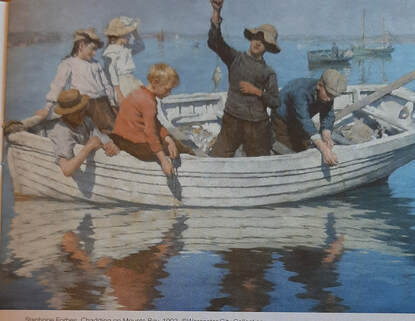
From the Cornish Coast to the Malvern Hills
British Impressionism from the 19th and 20th century.
Ten members from the Art Appreciation Group met at Worcester Art Gallery to listen to our guide who gave an informative lecture on the above topic. We learnt that British impressionists characteristically painted en plein air with free brushstrokes and joyful colours, focused on the interplay between working people, families at leisure and the landscapes they lived in.
This exhibition brought together works from the Worcester City collection and other galleries to celebrate the links between Worcestershire and the Newlyn School of artists who were pivotal in this magical moment in British Art.
The exhibition includes paintings by Stanhope Forbes, his wife Elizabeth and Dame Laura Knight. Camille and Lucian Pissarro represent the influence of French Impressionists.
After the lecture we were able peruse the paintings at leisure and finally adjourned to the tea room for a welcome cup of tea and cake.
The picture is Chadding on Mount’s Bay 1902. by Stanhope Forbes - It is an idyllic scene, the water is calm, the sun sparkles on their reflections in the water and the children are chadding (fishing) for herrings.
British Impressionism from the 19th and 20th century.
Ten members from the Art Appreciation Group met at Worcester Art Gallery to listen to our guide who gave an informative lecture on the above topic. We learnt that British impressionists characteristically painted en plein air with free brushstrokes and joyful colours, focused on the interplay between working people, families at leisure and the landscapes they lived in.
This exhibition brought together works from the Worcester City collection and other galleries to celebrate the links between Worcestershire and the Newlyn School of artists who were pivotal in this magical moment in British Art.
The exhibition includes paintings by Stanhope Forbes, his wife Elizabeth and Dame Laura Knight. Camille and Lucian Pissarro represent the influence of French Impressionists.
After the lecture we were able peruse the paintings at leisure and finally adjourned to the tea room for a welcome cup of tea and cake.
The picture is Chadding on Mount’s Bay 1902. by Stanhope Forbes - It is an idyllic scene, the water is calm, the sun sparkles on their reflections in the water and the children are chadding (fishing) for herrings.
3rd MAY 2023 - BIRMINGHAM ORATORY

Fifteen members from Art Appreciation and Local History Group 2 visited Birmingham Oratory on Wednesday 3rd May 2023.
Our guide, David Joyce, the Oratory archivist, gave us a detailed talk about the history of the Church, the origins of the Oratory of Saint Philip Neri and an insight into the life of Cardinal John Henry Newman, who was the founder of the English Oratory in Birmingham.
According to our guide, Cardinal Newman was one of the greatest Englishmen of the 19th century, he was a man who combined a great intellect with literary gifts and personal holiness. He founded the first Oratorian Congregation in Birmingham in 1848.
The present church was finished in 1909 and consecrated in 1920 after the death of the Cardinal in 1890. The plans were drawn up by Dorian Webb and this new classical church incorporated many ornate features. Its nave is basilican in the true ancient Roman manner and is 152 feet long. The roof is tunnel-vaulted and 12 marble columns line the nave, six on each side.
After an initial address the guide took us around the oratory stopping at each of the side Alters, Shrines and Baptistry. Before each Alter hang Italian-lamps. The arches of the recesses are covered in richly coloured mosaic tiles depicting scenes from the life of the Virgin Mary. The design plans were sent out to Murano, near Venice. On completion the mosaics were brought to England and put in place by Venetian workmen in 1913. Different types of marble, onyx and alabaster adorn the church and the ceiling in the Sanctuary is decorated with Eucharistic texts and motifs from Scripture. The images of the 14 Stations of the Cross were made from richly painted Limoges enamel.
We progressed to St Philip’s Chapel, which is the last remnant of the old church and Newman often said Mass there. The Chapel contains a large number of beautiful reliquaries and interesting relics.
Finally, we were taken to Cardinal Newman’s house and museum where we saw a video tour of Newman’s room preserved as he left it when he died in 1890. In the museum itself there were many precious historical items on view such as his spectacles and Rosary Beads.
Back outside in the quiet, red brick cloisters we could only marvel at how tranquil it all is especially when the busy Hagley Road is only a few yards away.
Our guide, David Joyce, the Oratory archivist, gave us a detailed talk about the history of the Church, the origins of the Oratory of Saint Philip Neri and an insight into the life of Cardinal John Henry Newman, who was the founder of the English Oratory in Birmingham.
According to our guide, Cardinal Newman was one of the greatest Englishmen of the 19th century, he was a man who combined a great intellect with literary gifts and personal holiness. He founded the first Oratorian Congregation in Birmingham in 1848.
The present church was finished in 1909 and consecrated in 1920 after the death of the Cardinal in 1890. The plans were drawn up by Dorian Webb and this new classical church incorporated many ornate features. Its nave is basilican in the true ancient Roman manner and is 152 feet long. The roof is tunnel-vaulted and 12 marble columns line the nave, six on each side.
After an initial address the guide took us around the oratory stopping at each of the side Alters, Shrines and Baptistry. Before each Alter hang Italian-lamps. The arches of the recesses are covered in richly coloured mosaic tiles depicting scenes from the life of the Virgin Mary. The design plans were sent out to Murano, near Venice. On completion the mosaics were brought to England and put in place by Venetian workmen in 1913. Different types of marble, onyx and alabaster adorn the church and the ceiling in the Sanctuary is decorated with Eucharistic texts and motifs from Scripture. The images of the 14 Stations of the Cross were made from richly painted Limoges enamel.
We progressed to St Philip’s Chapel, which is the last remnant of the old church and Newman often said Mass there. The Chapel contains a large number of beautiful reliquaries and interesting relics.
Finally, we were taken to Cardinal Newman’s house and museum where we saw a video tour of Newman’s room preserved as he left it when he died in 1890. In the museum itself there were many precious historical items on view such as his spectacles and Rosary Beads.
Back outside in the quiet, red brick cloisters we could only marvel at how tranquil it all is especially when the busy Hagley Road is only a few yards away.
|
Members looking towards the Sanctuary which forms the focal point of the Church and provides the scene for the principal liturgical events of the Church year.
|
The nave, leading up to the Sanctuary; the pulpit is the most prominent object and is based on that in St Mark’s, Venice. The columns are 21’ 8” long, which include the Swedish marble bases and the column’s capitals.
|

